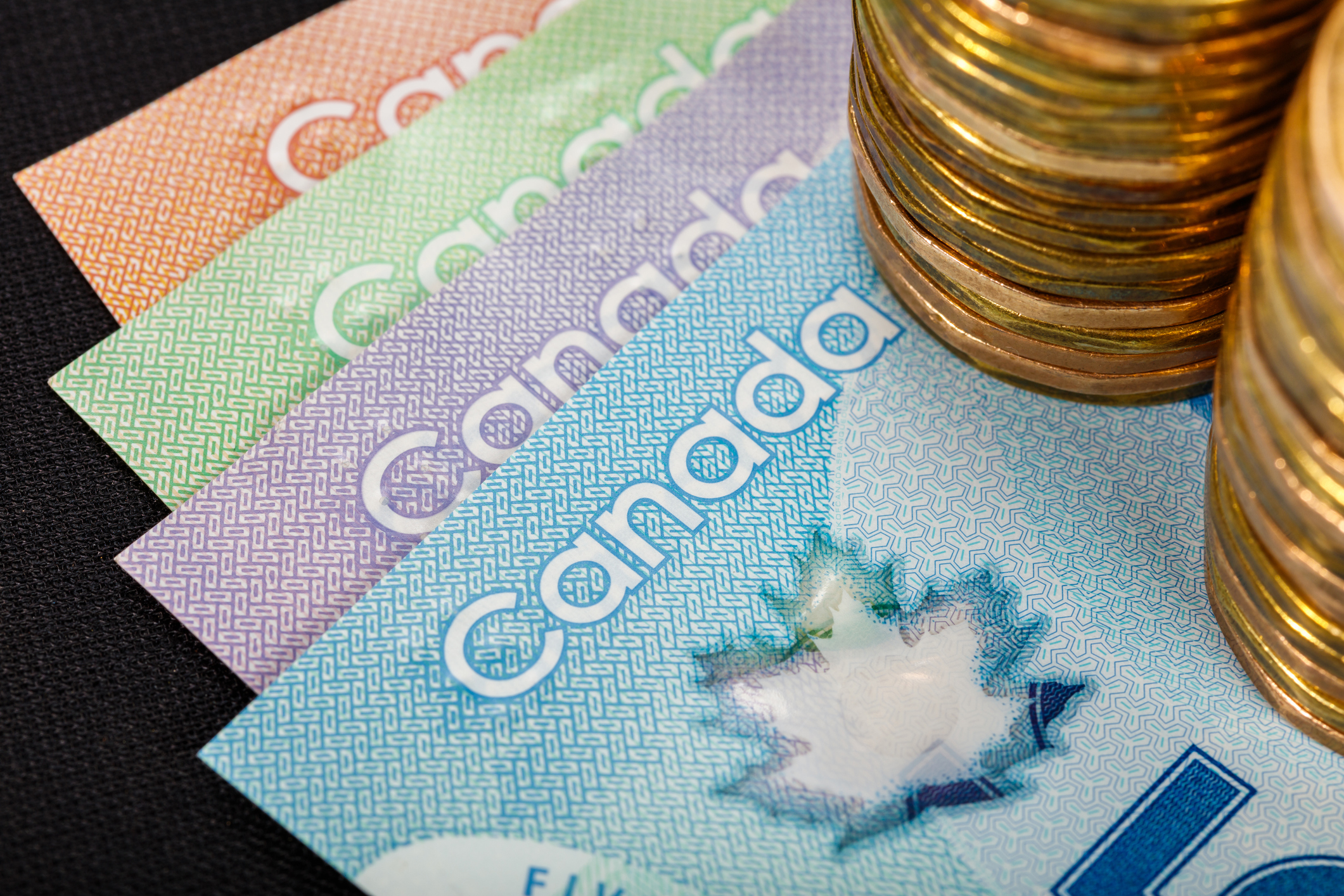Forex — short for foreign exchange — is the buying and selling of global currencies.
Forex trading, sometimes referred to as FX trading, involves simultaneously buying one currency while selling another (effectively exchanging currencies).
It’s a bit like investing in stocks, except that with forex trading, you’re betting on the price of currencies to make a profit. Forex trading is a complicated and high-risk investment strategy.
What is the foreign exchange market?
The forex market is by far the largest financial marketplace in the world. In 2020, the global forex market was worth over $2 quadrillion USD — a truly staggering number.
Most trades happen on an institutional level (by banks and other large financial organizations) through the “interbank” system. Individual investors can trade forex through over-the-counter markets using brokers and dealers.
Factors that influence the forex market
A country’s currency fluctuates depending on what’s happening with its economy, as well as in relation to other countries and currencies.
Local indicators of a strong economy, like low unemployment or a strong manufacturing industry, can bode well for a country’s currency. Also, the more a country’s goods (from natural resources to manufactured products) are in international demand, the better its currency is likely to perform.
Comparatively, currencies rise or fall in relation to other currencies based on factors like interest rates and inflation.
What is forex trading?
Forex trades involve pitting one currency against another, betting that one will outperform the other. Thus, trades always happen in pairs. There are major pairs, minor pairs and exotic pairs.
Major pairs always include US dollars (USD) and are the most frequently traded. Each currency is represented by a three-letter symbol — for example, CAD for Canadian dollars, EUR for euro and GBP for the British pound.
Let’s take the most commonly traded pair — the euro and the US dollar (EUR/USD). Traders will either take a “buying” or “selling” position on the first-named currency (in this case, EUR). You buy EUR if you believe it will perform better than USD, or sell EUR if the you think the inverse will happen. If what you believe comes true, you make a profit or loss in the opposite scenario.
How forex trades work (dealers vs. brokers)
Without a centralized exchange for foreign currency, investors do trades through dealers and brokers who negotiate prices with each other in over-the-counter markets .
Dealers facilitate the FX trades, and they make their money through spreads — the difference between the buy and sell rate — and fees. Dealers each set their own rates through quotes, which indicate the price at which they’re willing to sell a currency to a buyer.
Brokers (and brokerage accounts) act as agents and financial advisors for investors, sometimes finding the best dealer rates. They make their money through commissions or mark-ups.
How FX trading works
While the FX market might seem simple so far, in fact it is anything but. Let’s get technical.
Key definitions
- Bid: The price at which you can sell the base currency, or the price the dealer is willing to pay you for it.
- Ask: The price at which you can buy the base currency, or the price the dealer is willing to sell the it for.
- Spread: The difference between bid and ask prices.
- Pip: An acronym that stands for percentage in point or price interest point. It indicates a change in the currency price down to the fourth decimal point. A change of 0.0001 is a pip. It’s the smallest price move in forex markets.
- Order: The transaction you instruct your broker to execute.
- Lot size: The number of currency units in an order. A standard lot is 100,000 base currency units (e.g., $100,000), a mini lot is 10,000 units and a micro lot is 1,000 units.
How to place a trade
Based on your market research, you first select a currency pair (e.g., EUR/USD) to trade.
Next, check the quote. For example, with a bid/ask of 1.0733/1.0737, there is a difference of 4 pips, which include dealer/broker commissions. Then you research whether the EUR will rise or fall in relation to USD.
If you think EUR will rise, you place a buy order. This means you buy at the ask price (1.0737). To close out this position (to take a profit or loss), you watch the bid prices because you own the currency and are looking to sell to the highest bidder. If the price rises to 1.0749/1.0745, then you are up 12 pips (1.0749 minus 1.0737). You can place a sell order and take your profit. In terms of dollars, on an investment of $10,000, you would make $12.
If instead you think the EUR is going to fall, using these same quotes, you would enter a sell order for 1.0733. When you see the price movement is going in the wrong direction for your liking, you might close out your position at 1.0745, crystallizing a loss of 12 pips.
Forex trading strategies
In a highly volatile market that depends on minuscule changes in currency prices, it’s important to have a plan. Here are some primary trading strategies:
- News trading: Headlines affect currencies. By tracking the news and reacting quickly to it, you can take advantage of these shifts.
- Scalping: This involves placing many trades and taking small profits with each one.
- Day trading: Closing out all your positions at the end of every trading day, you minimize the risk of having positions open overnight.
- Swing trading: You capitalize on the overall momentum of a currency with a “buy low, sell high” mentality.
- Trend trading: You adopt long-term trading based on macro-trends.
What are the risks in FX trading?
The forex market is not for the faint of heart. Because every trade effectively involves a buyer and a seller, there is always a winner and a loser, and even the most experienced forex investors can — and do — lose.
Foreign exchange trading risks include:
Speculation: Trading based on fractional changes in currency is highly speculative. The markets can change quickly with a news headline that can throw an otherwise sound strategy out the window and trigger huge losses (or gains).
Leverage/margin: Trade lots may be 100,000 units, but that doesn’t mean traders are putting up $100,000 per trade. Instead, forex traders use leverage, which involves investing a smaller amount of money as a “down payment” for a loan of the larger amount. This can be great if your trade closes in a profit, but it can also be disastrous if you lose. Even though you initially invest a smaller amount, you are on the hook for the whole sum — and a bad trade means you could end up not just losing your investment but also owing money.
No central exchange: Without a single centralized exchange for transactions, rates and spreads can vary by dealer.
You’re up against the big guns: Forex trading is mainly done by banks and large institutions. They have significant resources and information to inform their trades, and a better ability to absorb short-term losses. In the zero-sum game of forex trading, it’s difficult to match institutions.
Dealer conflict of interest: Because every trade has a loser and a winner, if the dealer is on the other side of your trade, they may not have your best interest in mind. Consider any advice you receive carefully.
Forex regulations in Canada
Without a global centralized exchange, there’s no overall regulatory body for foreign exchange trading. Instead, regulation is up to individual governments.
In Canada, trading firms must be registered with the Investment Industry Regulatory Organization of Canada, as well as with the province in which they do business.
Forex trading vs. stock trading
There are two big differences between forex and stock markets:
Hours: Unlike stock exchanges that are open during that country’s business hours, forex markets are open 24 hours a day from Monday through Friday in different parts of the world. During the summer, forex market hours are 9 p.m. GMT on Sunday to 9 p.m. GMT on Friday. That means the markets open first in Australia, then Asia, Europe and North America. In the winter, the start and end times shift to 10 p.m. GMT.
No centralized marketplace: Stock exchanges are marketplaces for executing trades of the exchange’s underlying stocks. Forex has no such centralized exchange, and is instead dependent on over-the-counter dealers.

How to Buy Stocks in Canada
Learning how to buy stocks in Canada can seem intimidating, but this guide will help you learn how to research stocks, choose a broker and optimize your portfolio.

ETFs vs. Stocks: How to Choose
Stocks are investments in an individual company. ETFs bundle diverse investments, which may include stocks. The best choice depends on your investment strategy.

5 Recession-Ready Tips for Savers and Investors
Get proactive to steer your finances through rocky economic conditions like a pro.

What Is Canadian Investor Protection Fund (CIPF) Coverage?
CIPF coverage protects you if your investment dealer fails, insuring up to $1 million of your assets in specific types of accounts.
